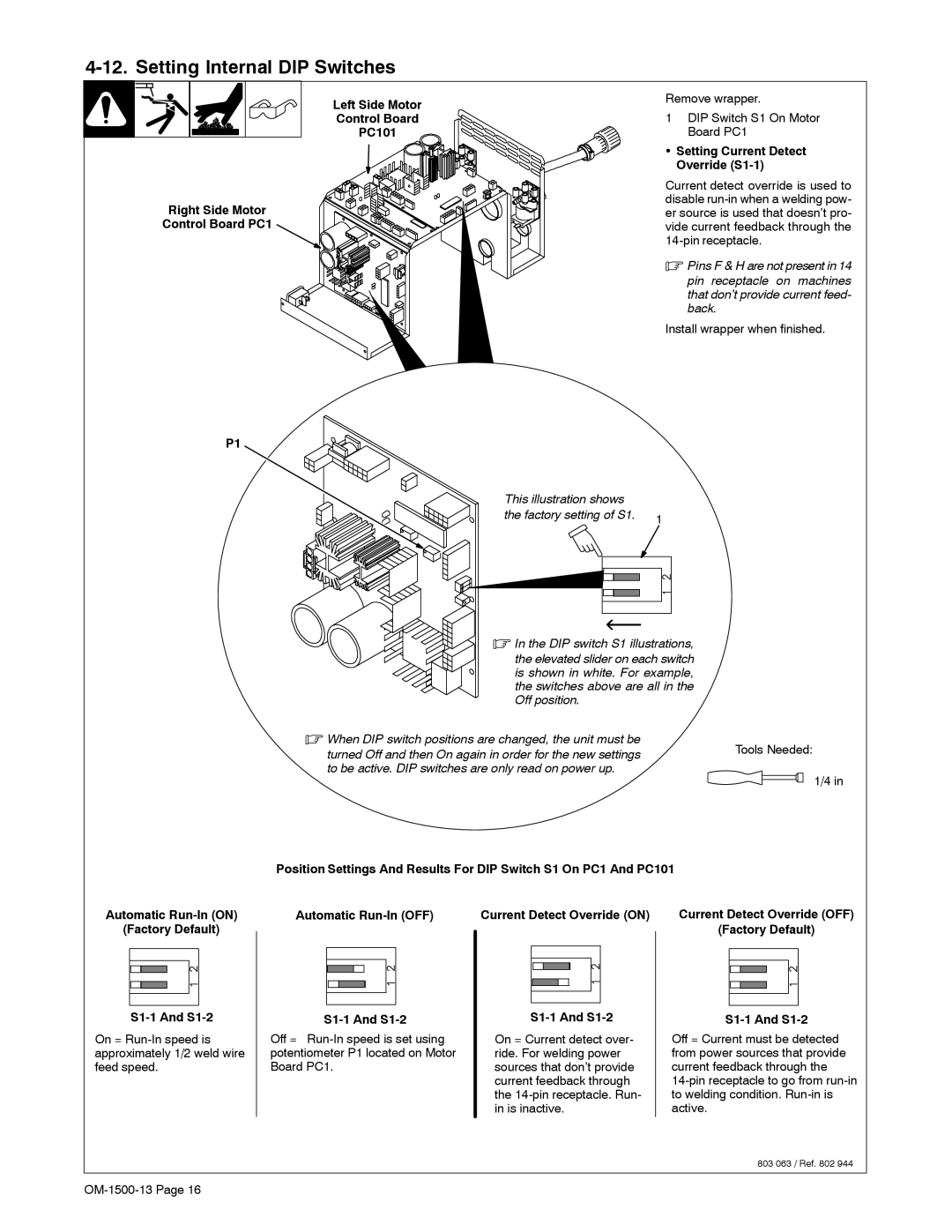DS-74D12, DS-74S12, and DS-74D16, DS-74S16 specifications
Miller Electric has long been recognized for its high-quality welding and cutting equipment. Among their extensive lineup, the DS-74S16, DS-74D16, DS-74S12, and DS-74D12 models stand out for their robust features and advanced technologies tailored for professional welders and metal fabricators.The Miller DS-74S16 is particularly engineered for heavy-duty applications, making it perfect for industrial environments. It boasts a powerful input range, providing versatility for different welding processes. Its user-friendly interface allows for quick adjustments, ensuring efficiency during operation. The design emphasizes safety and reliability, with protections against overcurrent and thermal overload. Similarly, the DS-74D16 offers dual capabilities for welding and cutting, which adds flexibility to a welder's toolkit. This model integrates advanced digital controls that help maintain consistent performance, enhancing the overall quality of the welds produced.
Moving on to the DS-74S12 and DS-74D12 models, these versions cater to lighter applications without compromising on quality. The DS-74S12 is designed with portability in mind, making it an excellent choice for fieldwork and smaller workshops. It features a compact design while still delivering impressive performance, ideal for less demanding tasks. The DS-74D12 variant shares this lightweight construction but offers the added benefit of dual-functionality. Users can effortlessly switch between welding and cutting, accommodating various project requirements.
Across the board, these models incorporate Miller’s innovative technologies. Their advanced inverter technology helps increase efficiency, reduce energy consumption, and minimize noise levels during operation. Additionally, the use of durable materials ensures longevity and resilience in harsh working conditions.
The entire range is characterized by ease of maintenance and serviceability, with components designed for quick replacement when needed. User support and comprehensive documentation provided by Miller Electric further enhance the experience for both novice and experienced welders.
Overall, the DS-74S16, DS-74D16, DS-74S12, and DS-74D12 models represent a perfect blend of power, flexibility, and precision, catering to the evolving needs of professionals in the welding industry. These machines are suitable for diverse applications, ranging from heavy industrial tasks to light repairs, making them an invaluable addition to any welder’s arsenal.

